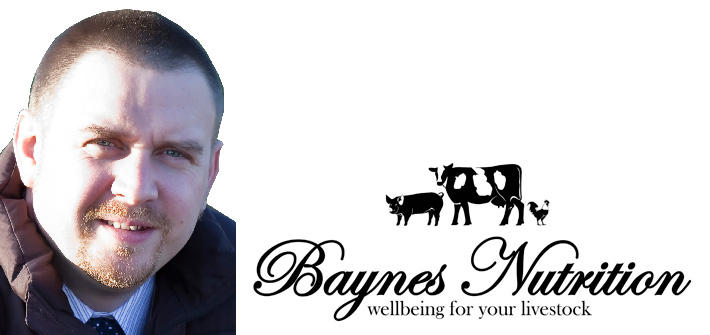Feed costs have fallen thanks to lower raw material prices, but this dynamic could lead to complacency in trying to maximise feed efficiency. With these lower prices, does it matter, or have much impact on the bank balance, if FCR increases? So what’s my answer? I’m not being political when I say that it’s a complex debate!
Production inputs are multifactorial, and a variety of costs are quite rightly reviewed – such as hygiene protocols, herd replacement rates and straw usage. However, feed cost and utilisation, and factors affecting both, remain critical.
A year ago, a finisher ration could easily cost about £200/t, but the SPP was 133p/kg – this gave an index of 0.665 (133p/£200). Today that same feed would be £25/t cheaper, or 12.5% down, but the SPP on March 5 was 16% down at 112p/kg, so the return:cost ratio has diminished to an index of 0.640.
Despite this, the cost/kg liveweight gain has fallen as a function of the weaker commodity markets. This can lull us into a false sense of security, and it’s vital that we look at improving the utilisation of the feed rather than simply reducing the cost of it. Or can we make better use of a less-expensive ration to regain this index?
To get back to the price dynamic of last year at 0.665, that same finisher feed has either got to get down to £168/t or the SPP pig price up to 116p/kg – whether either of these things will happen is very uncertain at the time of writing.
The area that the producer is more in control of is making better use of the feed or using less of it. And this is where gut health comes into play. The intestine is the main site of nutrient absorption, and if it’s compromised, efficiency suffers accordingly. Factors that impact on gut integrity include pathogenic challenges, both viral and bacterial, as well as damage through mycotoxin contamination of feed.
We can talk about the use of probiotics to outcompete pathogenic species in gut, or which produce compounds to aid digestion. We can also discuss the use of prebiotics, which feed the beneficial microflora. There’s a plethora of mycotoxin binders on the market, and on top of this we can also discuss the use of higher doses of the enzyme phytase to enhance the nutritional properties of raw materials.
A combination that’s currently looking very promising involves two elements. The molecule Betaine has beneficial properties in protection against osmotic stress, where water is retained in the intestinal cells, helping to reduce dehydration as a consequence of scour. This, in association with butyric acid, which is known to accelerate the proliferation of gut enterocytes and reduce inflammatory response, is a good platform for maintaining and regulating the small intestine and allowing greater absorption of nutrients, resulting in better health, growth and a lowered FCR.
In the face of any health challenge, we must always seek veterinary advice and use medication as directed prior to using purely nutritional techniques – but this combination gives an exciting complement, and more ammunition to our current arsenal for prevention and cure.




